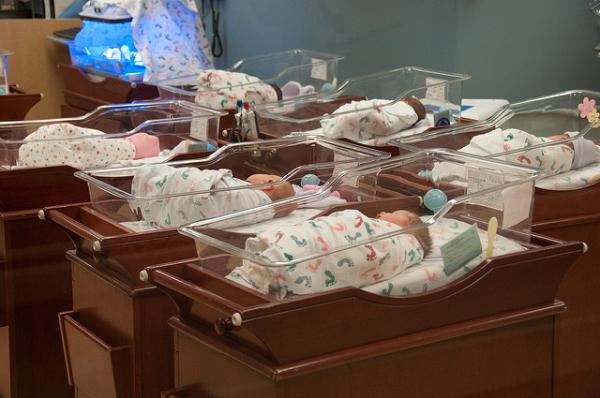Identifying characteristics are essential to ensuring patient safety - so that the right treatment meets the right patient. Did you ever consider how many times you are asked your name and date of birth when seeking medical care? Consider those patients who arrive in the emergency room alone, unconscious and septic, or with dementia, unable to respond. Hospital staff sometimes has the help of a loved one, a note or call from a treating doctor, even a wallet to fill in the identity and history gaps. And while this is true for all of our patients, identification poses a particularly unique challenge in the newborn nursery, especially for those higher risk longer stays in the neonatal intensive care unit (NICU). Misidentification in this population and its untoward effects are such an issue that the Joint Commission - the organization responsible for hospital-accreditation - is stepping in to mitigate the threat.
In patient care more information saves lives, less information can end them.
The Joint Commission's new recommendations require at least two identifiers be used when providing care to newborns as a means of reducing error (see here). And while all babies are cute and special, they often look alike, especially the neonates. In this group, name duplications are more common than you would imagine and for obvious reasons, the date of birth is shared by many occupants of a labor and delivery ward. Throw twins and multiples into the mix with common surnames, a lack of distinguishable features, similar medical record numbers, and a non-verbal patient population, unable to speak up when misidentified and you have the perfect storm.
How do hospitals "name" babies?
Newborns are named by their gender and mother’s last name, e.g. Babygirl Smith. Mom’s surname is traditionally used since maternity can be proven readily under these circumstances, whereas paternity can be a bit more complicated. Additionally, this helps staff understand which baby belongs to which hospitalized mother. Gender is incorporated because it reduces misidentification visually. Prior to discharge, parents typically have settled on a formal name to sign the birth certificate and the legal name is literally born. If parents haven't come to a consensus, the baby is discharged with a legal name of Babygirl Smith. Once the parents settle upon a name after hospital discharge they must go to City Hall for a formal change and reissue of the birth certificate.
Wrong patient, wrong care - the dangers of error
Misidentification of patients is very problematic. It leads to patients having unnecessary tests, and receiving the wrong medications. It can result in patients having the incorrect procedure or even information entered into their medical records that is inaccurate. When expressed breastmilk of one mother is given to the wrong infant there are concerns about passage of potential pathogens and body fluids. Transfusions to the incorrect patient can be very harmful. (See here and here for greater detail).
Superior medical care and optimal patient safety rely on the personal data at the bedside
The more information a physician has about your personal health, the safer your experience as a patient. Not knowing you take supplemental potassium and a host of alternative therapies can put you in harm’s way should you be prescribed certain medications. Under emergent conditions identifiers are important because they can help expedite and guide care (diminishing false starts while allowing for more swift diagnosis); confused identification can do meaningful harm.
When it comes to the nursery and newborns, these latest Joint Commission “best practices” are, in my experience, already implemented in any nursery or NICU setting e.g. visually alerting staff with signage for similar name alerts, two body-site barcode band placement. Staff is typically hyper-vigilant in these settings because it is a constant safety concern. The Joint Commission should be congratulated on trying to standardize our naming policies to improve the care everywhere.
One last thought
The concept of gender neutrality is gaining gradual cultural acceptance; Canada recently implemented a gender “X” or exclusion option on birth certificates. An unintended consequence may be greater difficulty in uniquely identifying our newborns in the hospital environment. A balance between respectful inclusion, patient autonomy expressed through parental preference and ensuring patient safety needs to be found.




